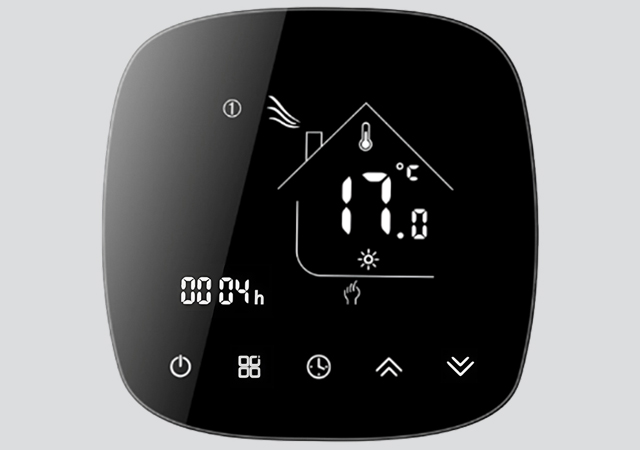Path to cleaner, greener, safer future
Economic advancement cannot come at the expense of people or the planet. BRIAN HEMPENSTALL, Managing Director at Rheem Middle East, outlines how the digitalisation of HVAC systems can support economic, personal and environmental well-being in the region and beyond.
01 May 2024
By 2050 the number of inhabitants in the GCC is predicted to rise by 50 per cent1, to incorporate an additional 22 million people. Of these, approximately nine in 101 will live in urban areas, surpassing the global average by 36 per cent. And, as the economies of the region continue to diversify and expand, urban expansion is set to super-charge economic opportunity.
However, this regional growth is complicated by a global challenge: the onset of climate change. As cities rise and populations soar, so does the need for smarter, cleaner, more efficient HVAC solutions – especially in the perenially hot and arid climates of the Middle East, where temperatures are rising twice as fast2 as the global average. And this is where the digitalisation of HVAC systems can make a real difference.
‘Digitalisation’ is, in essence, when advanced technologies – such as the Internet of Things (IoT) – are integrated into HVAC systems for improved performance. However, it could also hold the solution to a better future for all.
Perhaps the most significant benefit of digitalisation within HVAC is its capacity to mitigate the sector’s environmental impact.
 |
|
Brian Hempenstall |
It’s no secret that, historically, HVAC has been a key driver of global energy consumption – and today, air-conditioning alone generates four per cent3 of global greenhouse gas emissions. For context, this is twice as much3 as the entire aviation industry. But this is also where the ‘air-conditioning paradox’ comes into play: when the temperature rises, our instinct is to switch on our units. However, a reliance on traditional HVAC systems further compounds excessive energy consumption, which contributes to greenhouse gas emissions – and, ultimately, environmental damage. So, while air-conditioning can ensure comfort in the short term, the use of outdated and inefficient HVAC technologies leads to an even hotter and even more arid climate in the long term. Thankfully, digitalisation can help to break this vicious cycle of demand, consumption and energy waste.
For example, smart thermostats – which integrate advanced sensors and Wi-Fi connectivity within systems – allow users to remotely control, monitor and adjust their HVAC settings from a smart device. From features such as geo-fencing to occupancy sensing, digitalised HVAC systems provide users with a greater degree of insight and control over their systems, to minimise unnecessary energy consumption.
In addition to manual interventions and settings, digitalised HVAC systems can also leverage information such as real-time data, occupancy patterns and weather conditions, to intelligently and automatically adjust their cooling, water heating and ventilation levels. By intuitively optimising energy usage, these systems are contributing towards a more sustainable way of living – even in the hottest of climates.
Another key benefit of digitalised HVAC systems is improved occupant health and well-being. In addition to providing more intuitive, tailored comfort levels, intelligent air-conditioning and ventilation systems can also be a significant contributor to improved indoor air quality (IAQ). On average, we spend about 90 per cent4 of our time indoors – meaning that the quality of the indoor air we breathe matters. However, even in the smoggiest cities, the air inside most modern homes is usually 10 times5 more polluted than the air outside. Excess moisture and pollutants can lead to a decrease in IAQ, which can cause occupant discomfort in the short term and serious health issues in the long term. In fact, four per cent of deaths globally are attributed to indoor air pollution.
By integrating smart monitoring technology into air-conditioning and ventilation units, digitalised systems equipped with sensors can continuously monitor indoor air quality parameters such as temperature, humidity, particulate matter and carbon dioxide levels and collect real-time data. This enables these systems to detect IAQ issues promptly and take corrective actions to maintain optimal air quality. As an added benefit, digitalised HVAC systems can also generate reports and alerts based on collected data, providing building occupants and facility managers with insights into IAQ conditions. By ensuring healthier indoor environments, these systems reduce the risk of respiratory illnesses and improve overall occupant well-being, whilst minimising the energy required for conditioning indoor air.
These diagnostic capabilities also provide another significant benefit for users: better economic efficiency.
The digitalisation of HVAC systems has further enabled the use of predictive maintenance technologies, which leverage historical data, machine learning and real-time insights to ensure better operational efficiency and a longer equipment lifespan. They also allow facilities managers to remotely identify, and promptly address, system inefficiencies and malfunctions. By identifying maintenance needs before they become critical, these systems prolong equipment lifespan, and minimise both operational and maintenance costs, to promote a more economically efficient system.
As our populations grow and our built environments expand, our infrastructure needs to work harder and smarter than ever before. And the digitalisation of HVAC systems is a critical step towards a more sustainable future – for our economy, our health and our environment. By embracing the widespread adoption of digitalised products within the HVAC industry, businesses, building owners and users alike can harness its transformative potential for a better world – and a future where we can all breathe easier in.
- Path to cleaner, greener, safer future
- Digital tools can cut fuel consumption, emissions
- Paving the way for a sustainable future
- Dewan deploys Cloud based solution at Amaala



